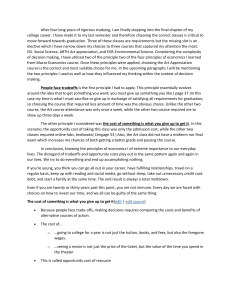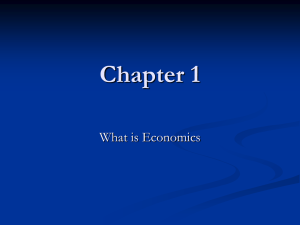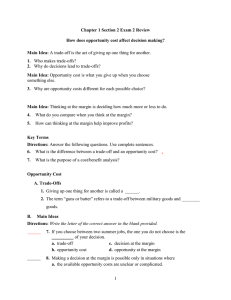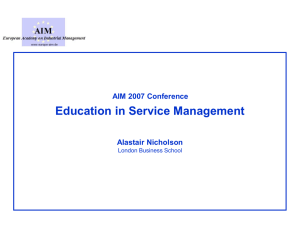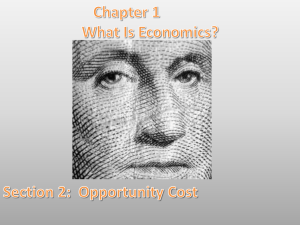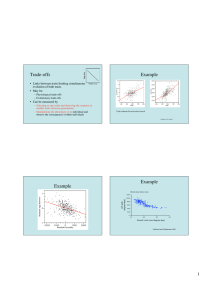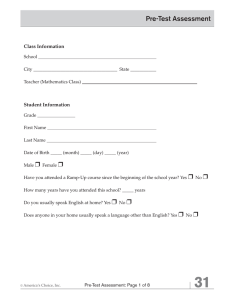Introduction to Economics * Day 1
advertisement
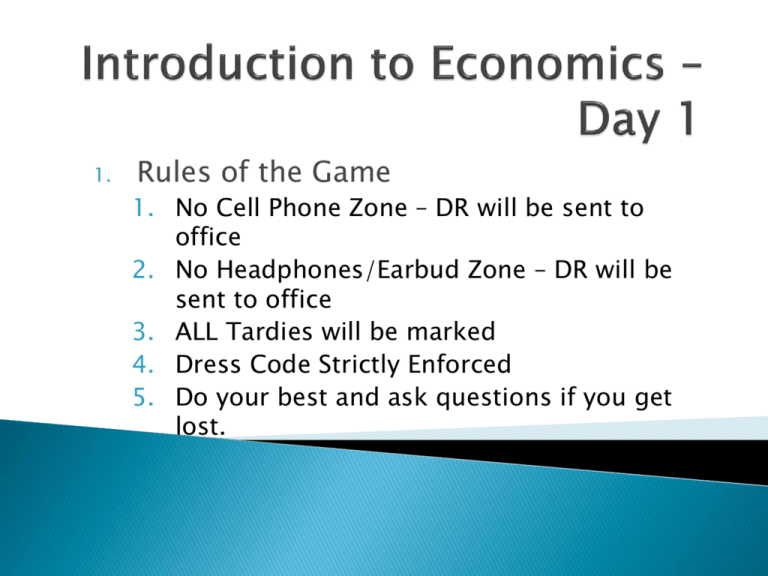
1. Rules of the Game 1. No Cell Phone Zone – DR will be sent to office 2. No Headphones/Earbud Zone – DR will be sent to office 3. ALL Tardies will be marked 4. Dress Code Strictly Enforced 5. Do your best and ask questions if you get lost. Grade Weights ◦ ◦ ◦ ◦ Unit Tests & Quizzes EOC Daily Work Projects 40% 10% 25% 25% ◦ Textbook – Economics: New Ways of Thinking ◦ Tests will be ScanTron Tests from the text and what we do in class. The expectation is that you will be taking notes. ◦ Questions as to rules, grade weights, or anything else? Pre-test – do not panic, this just gives me an idea if you know anything about Econ on a basic level – will go into the gradebook as a point of reference only. Read the questions carefully and use logic to answer the questions. Begin pre-test – 30 minutes Correct pre-test – 30 minutes Goals: Economics Basics: The students will: 1. Come to an understanding about classroom expectations. 2. Learn what economists do. 3. Learn the concept of opportunity costs. 4. Learn the concept of trade-offs. 5. Learn how trade-offs and opportunity costs compare. What are the first 10 words that come to your mind when you look at the word economics? Study markets, prices, costs, production, inflation, unemployment, interest rates, business cycles, budget deficits, exchange rates, etc. What are each of these subjects? Goals: The students will ◦Review the concept of opportunity costs. ◦Review the concept of tradeoffs. ◦Learn how trade-offs and opportunity costs compare. Each of you describe one thing you did last week. If you had not done that, what would you have done? What you gave up was the opportunity cost of what you did. The most highly valued opportunity or alternative forfeited when a choice is made. E.g., Buying a concert ticket vs. a new pair of Oaklies What would you consider when making your decision? A situation in which more of one thing necessarily means less of something else. E.g., The design of the lunar module involved a trade-off in the number of landing legs. Three were not stable but lightest – five too heavy but most stable. Designers compromised on four. E.g., Doing three hours of Econ and two hours of Math homework. What are other examples? Productive resources are limited. Therefore, people cannot have all the goods and services they want. As a result, they must choose some things and give up others. The act of choosing is the trade-off. The difference in value between the two is the opportunity cost. E.g., I want a Hybrid, but can only afford a regular automobile. That is the trade-off. The opportunity cost is the money I save.
